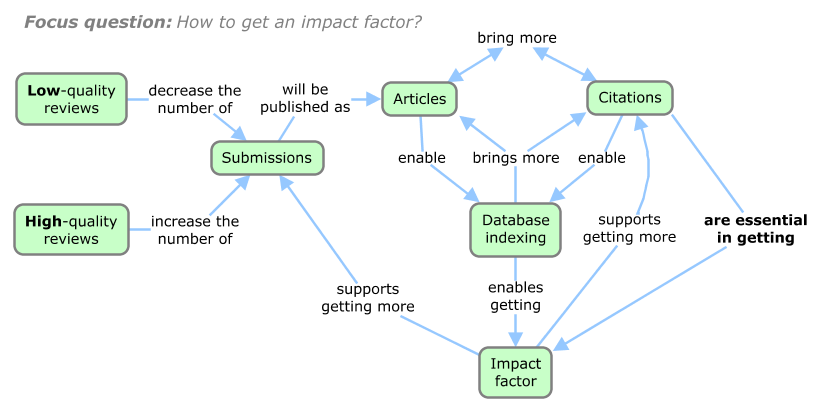How to get an impact factor for a journal?
Posted on March 25th, 2020
As the Managing Editor of LUMAT, one of my main challenge for future is to get an impact factor for the journal. How can I achieve that?
The importance of indexing
I have been running my ME position in LUMAT a little over two years. During that time we have get LUMAT indexed in ERIC, Scopus, Google Scholar, DOAJ, Index Copernicus and Crossref. For many authors, the Scopus is the deal breaker. Their home institute expects that journal, where they publish, have been indexed at least in Scopus. But Scopus is not enough for everyone. Some authors and their institutions only value journals that have a high impact factor and are indexed in the Web of Science.
Note that indexing is vital for academic journals. Otherwise their articles are not found and citations are hard to get.
Web of Science and impact factor
First of all, impact factor (IF) is a citation index for academic journals. It indicates journal's impact through the citations made in last two years in journals that are indexed in Web of Science (WOS).
For a starting journal like LUMAT, this IF-WOS club seems to be a journal selection that we need to get accepted in order to grow. For me it is not sure that can LUMAT get an impact factor even though it has not been indexed in the Web of Science. Or is the WOS indexing the gate for an impact factor.
The situation is even more difficult to understand, because the institution behind this system is a community called the Web of Science Group. It is an information and technology provider owned by the Clarivate Analytics company.
So who runs what? What is the purpose for all this?
Making money or progressing science via improving validity and reliability? Or a mixture of those – i.e. making money through scientific information services?
My criticism is not directed to the money making aspect. I do some entrepreneurship as a hobby at my free time. I can appreciate the setting where someone makes profit through selling knowledge services. My criticism is directed to this complex structure and process of impact factor and Web of Science indexing. I don't understand it, but we still have to get LUMAT indexed in WOS and evaluated through IF.
A potential solution: High-quality reviews
I draw a concept map in order to understand the big picture. According to my analysis, there are many things that can be done.
The most important thing is to get high-quality submissions that can be eventually published as high-level articles. In this process, as the editor, I have realised that authors evaluate the quality of the journal through the critique that their manuscript receives during the review process. This means that the quality of reviews is everything.
If the review is done in a hurry and doesn't give constructive feedback to the author, the word will spread around and it decreases the number and quality of the send submission. On the other hand, if the reviews are professionally made and experienced relevant by the authors, good recommendations Will spread through the academic community.
Conclusion
My hypothesis is: If we concentrate on improving the reviews, we will eventually get indexed in the Web of Science and receive an impact factor. The mechanism is modelled in the concept map below. It is interesting to see how many years this will take.

References
- Clarivate Analytics. (n.d.). About us. Web of Science Group. Retrieved 25 March 2020, from https://clarivate.com/webofsciencegroup/about-us/
- Clarivate Analytics. (n.d.). Web of Science. Web of Science Group. Retrieved 25 March 2020, from https://clarivate.com/webofsciencegroup/solutions/web-of-science/
- Wikipedia. (2020). Impact factor. In Wikipedia. https://en.wikipedia.org/wiki/Impact_factor
